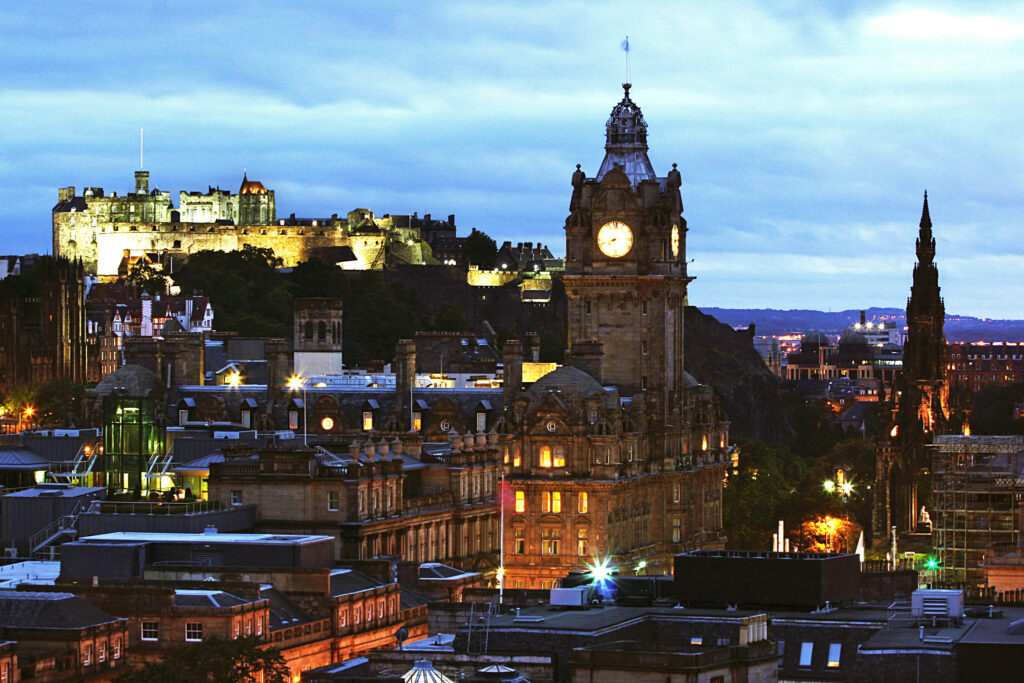By Andrew Reinhard
On August 11, 2017, a community of a few hundred people awoke to find their homes and farms destroyed, the air too toxic to breathe, and temperatures either soaring of plunging hundreds of degrees on either side of zero. They needed to evacuate, a mass exodus to the stars happening over the next few weeks. Their settlements became disaster ruins overnight, and this catalysmic event turned a human population into climate refugees.
Although this sounds like the plot to Interstellar or any other example of climate-based science fiction, all of the above actually occurred, but in the video game No Man’s Sky (Hello Games, 2016). The community affected was the “Galactic Hub”, a friendly group of players bound together in a Utopia of exploration and knowledge- and resource-sharing, the goal of which was to completely document everything about the region of the universe they inhabited. No Man’s Sky sets its players adrift in the loneliness of infinite space to explore any of its quintillion procedurally generated worlds. Humans, social creatures we are, gradually began to find their way to each other, coalescing into groups large and small, the Galactic Hub being one of the first and most active. Members of the Hub built settlements, which included homes and farms as well as art and commemorative monuments. They traveled to meet each other in space, and held gatherings—portal parties—to mark special occasions, the last of which commemorated the final departure to their new home.

Instead of a runaway greenhouse effect or sea-level rise, the climate catastrophe was caused by a . . . software update. August 11, 2017, saw the launch of “Atlas Rises”, version 1.3 for the game, which literally reset the universe almost exactly like the snapping of Thanos’ fingers. Most of the Hub’s players abandoned their original settlements, many of which were either now buried or left floating in the air thanks to topography that changed literally overnight. Players left notes of farewell, sometimes leaving a forwarding address. Other players packed up their bases as they departed for the new Hub, leaving behind only a footprint of where their base used to be. And, all because of a catastrophic software patch, we now had human sites and artifacts for an archaeology of an abandoned digital space.

As part of my University of York Archaeology PhD thesis, I conducted a case study into what is now called the “Legacy Hub ”. The goals of the project were not only to determine if (and how) archaeology could be conducted on human settlements within a digital environment, but also delved into 3D-printing human-made architecture, creating a new kind of map, undertaking photogrammetry of sites past and present, recording epigraphic evidence, and working hand-in-glove with the Hub’s leadership, which included an ambassador for the community’s heritage. The project took on an additional sense of urgency when Hello Games announced its new, major update, “NEXT”, which ultimately reset the universe again, and destroyed all earlier settlements.

All the evidence that remains of the Galactic Hub’s earliest days is recorded here on the Archaeology Data Service’s platform. The data and media are now archived for all time and are Open Access to anyone who wants to study the remains of a community beset by digital climate change, and to those archaeologists who are interested in my approach to conducting archaeological survey, excavation, and reporting from inside a video game.
The data of 30 archived Legacy Hub sites include:
- 2,931 JPEG images, which include aerial photos from drones, landscape images, and details of architecture and of inscriptions left behind by evacuating human players and visiting heritage tourists;
- 161 MP4 videos largely consisting of abandoned settlement flyovers and walkthroughs;
- 16 maps and plans showing the positions of structures and inscriptions relative to fixed points on the landscape;
- 19 spreadsheets containing inscription data and metadata found across the Legacy Hub;
- 45 documents, most of which are site reports created on the day/week of a settlement’s archaeological investigation, presented as-is no only to document discoveries but also to illustrate the evolution of reporting over the course of the project.
The data can be accessed at the No Man’s Sky Archaeological Project archive.


Thanks go to Katie Green of the ADS for managing this project, and to Teagan Zoldoske for ingesting all of the data and media onto the platform after I hand-keyed all of the metadata. Thanks also to the ADS’s senior leadership and board for taking a chance on a born-digital archaeological project of which this is one of the first. Thanks to the indiegogo crowdfunding campaign backers who helped pay the on-boarding fees for these archives when other, more “official” funding was denied. Thanks to the Hub community, specifically Syn1334 and Zaz Ariins, for their help and guidance throughout the project. Lastly, a big thank-you goes to Penny Spikins, Steve Roskams, and my supervisor Sara Perry, for encouraging me to follow this direction into an archaeology of digital things and places, which are human habitations.
If you have questions about this project, please email me at adr520@york.ac.uk. No Man’s Sky Archaeological Project patches and pins are still available if you would like to support the mission.






